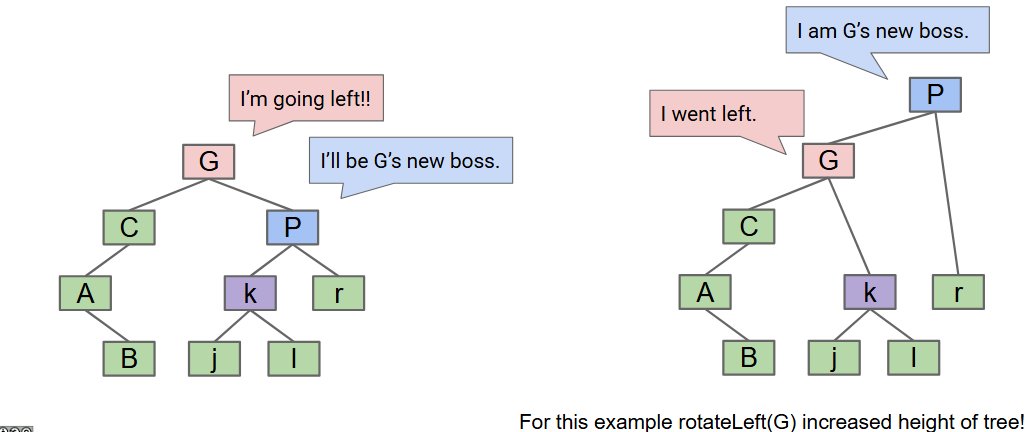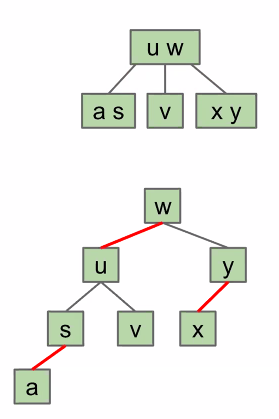Tree Rotation
- We may reotate trees left or right to keep trees balanced. In fact, in any BST, it is possible to move to a different configuration using “rotation”.
- rotateLeft(G): let x be the right child of G. Make G the new left child of x.
- X’s left child now becomes G’s right child.
- rotateRight(G): let x be the left child of G. Make G the new right child of x.
- These rotations can help us balance a tree.
- The rotation preseves the search tree property.
- We want to eventually reach a tree with the minimum average depth.
- The 2-3 tree can be used to model the rotations to self balance a binary search tree.
- There are many types of search trees:
- Binary search Trees: Balanced by rotation but no existing algorithm for doing so yet.
- 2-3 Trees: Balanced by construction: No rotation required.
- We want to build a BST that is structurally identical to a 2-3 Tree
Writing a BST that is identical to a 2-3 Tree
- Such a BST is called a Red-Black Tree.
- We color some of the link red. In a 2-3 Tree, we seperate a two node into a larger node whose left child is the smaller node along with all the children that are smaller than the larger node.
- The nodes within a 3 node are connected with a left-leaning left edge from the greater node as the parent, and the lesser node as the left child.
- A BST with left glue links that represents that represents a 2-3 tree is called a “left Leaning Red Black Binary Search Tree
![LLRB]()
- Searching in an LLRB for a key is exactly the same as a BST.
LLRB Construction
- We don’t want to build a 2-3 tree and convert it.
- We want to implement an LLRB insert
- Insert as usual into a BST, but then use zero or more totations to maintain a 1-1 mapping with the 2-3 Tree
- Pretend like we are a 2-3 tree when we are doing rotations.
- Should we use a red or black link when inserting?
- In 2-3 trees, new values are always added to a leaf node.
- Insertion on the left: We add a red link to connect the new node as the left child of a leaf node.
- Insertion on the right: We add the right child, and we realize that we have a 3 node in a 2-3 tree. Thus, we want to rotate the parent to the left so that we form a left-leaning, red edge.
- Double Insertion on the left: This means that we have a
- Temporary 4 node violation
1


